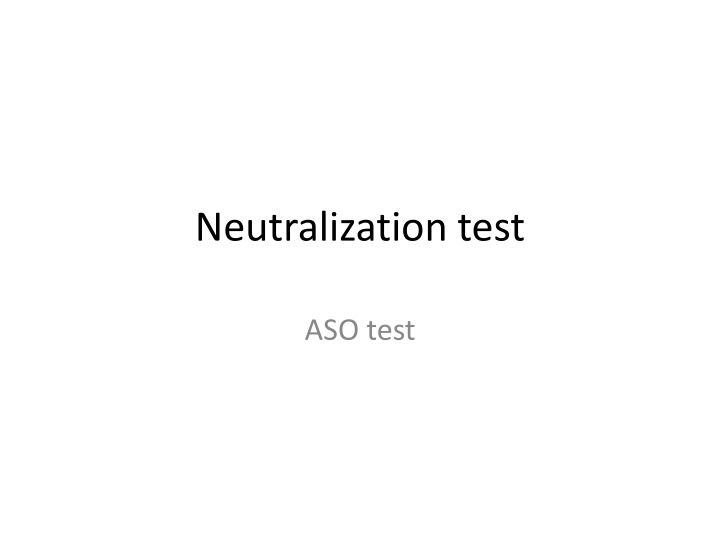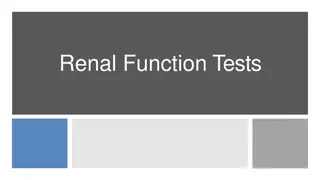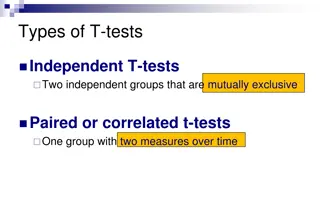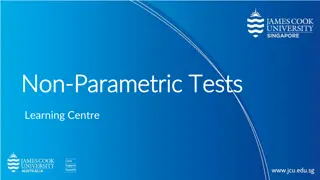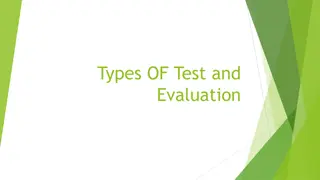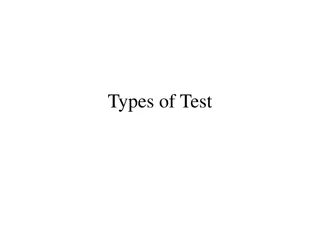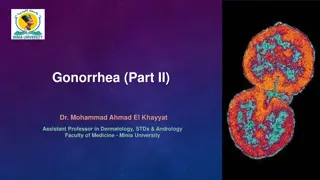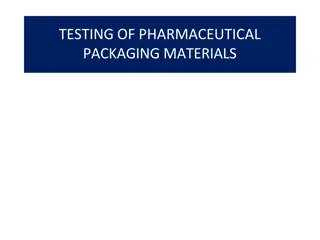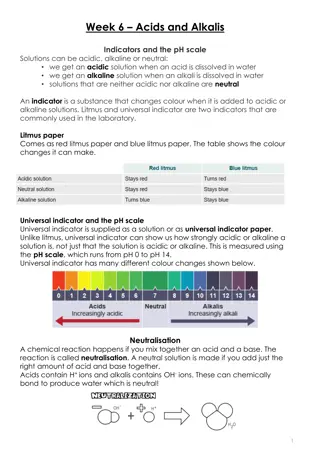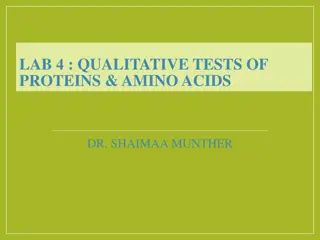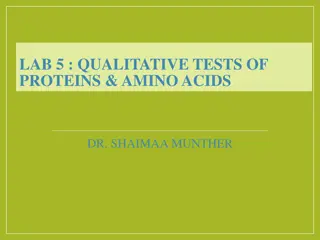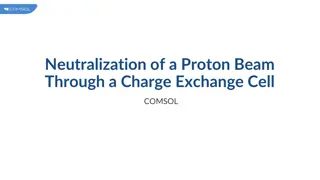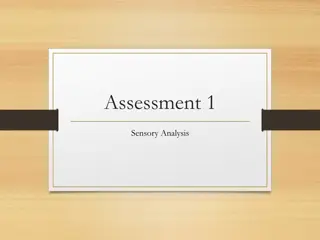Neutralization and Antitoxin Tests
Neutralization test and Antitoxin tests like the ASO test are crucial in diagnosing susceptibility to diseases like diphtheria. The Schick test and ASO titer play roles in assessing immunity levels. The principle of ASO test involves detecting streptolysin-O antibodies using red blood cells as indicators. These tests aid in identifying risks of post-streptococcal complications, including rheumatic fever and glomerulonephritis.
Download Presentation

Please find below an Image/Link to download the presentation.
The content on the website is provided AS IS for your information and personal use only. It may not be sold, licensed, or shared on other websites without obtaining consent from the author.If you encounter any issues during the download, it is possible that the publisher has removed the file from their server.
You are allowed to download the files provided on this website for personal or commercial use, subject to the condition that they are used lawfully. All files are the property of their respective owners.
The content on the website is provided AS IS for your information and personal use only. It may not be sold, licensed, or shared on other websites without obtaining consent from the author.
E N D
Presentation Transcript
Neutralization test ASO test
Toxin - Antitoxin Neutralization test 1. In Vivo (Schick test): Schick test - used to determine whether or not a person is susceptible to diphtheria (Corynebacterium diphtheria). Named after its inventor, B la Schick (1877-1967) It is a simple procedure.
A small amount (0.1 ml) of diluted (1/50 MLD) diphtheria toxin is injected intradermally into the arm of the person. Minimum lethal dose (MLD, also LDmin) is the least amount of drug that can produce death in a given animal species under controlled conditions If a person does not have enough antibodies to fight it off, the skin around the injection will become red and swollen, indicating a positive result. This swelling disappears after a few days. If the person has immunity, then little or no swelling and redness will occur, indicating a negative result.
Results can be interpreted as: Positive: when the test results in a red necrotic area of 5-10 mm diameter Pseudo-positive: when there is only a red colored inflammation and it disappears rapidly Negative reaction: No Wheel and erythema
2-In Vitro (Antistreptolysin O titration) ASO titer is used for the serological diagnosis of Group A beta- hemolytic streptococcal post complications ASO antibodies will be raised after infection with streptococci. Levels equal or greater than 200 units per ml are considered significant
Measurement of ASO can be useful diagnostically to determine if patient has high risk of post streptococcal complications. Diseases include: Rheumatic fever Post streptococcal glomerulonephritis Scarlet fever
Principle of ASO test Ag is streptolysin O =SO (immunogenic) Ab ( May be present or absent in patient sample) RBC s act as Indicator After diluting patient serum, Streptolysin O is added. After an incubation period, RBC s are added followed by incubation at 37 c.(why)
Principle If Ab ( ASO) is present in patient serum , it will bind to SO thus not free to react with indicator RBC s, the result appears as no hemolysis. If Ab is absent , Streptolysin O is free to react with RBC s resulting in hemolysis The serum sample of each patient will be diluted 1:10 and 1:50.
Procedure Deliver 50ul of Aso buffer to wells 2-8 in Row A, and wells 2- 9 in Row B. Put 75ul of Aso buffer in well A9. Deliver 50 ul of 1:10 diluted patient serum to wells 1,2 in row A. Do the same for 1:50 patient serum of row B. Make serial doubling dilutions from well 2 till 8 and discard 50ul from well 8 in both rows. Add 25ul of streptolysin O(Ag) to wells 1-8 in row A and wells 1-9 in row B. Incubate at 37c for 10-15 min. Add 25ul of 3% washed sheep red blood cells to all wells and incubate at 37c for 1 hour. Read Ab titer.
Procedure Outline Row A 1 2 3 4 5 6 7 8 9 10 11 12 50ul ASO buffer 75ul ASO buffer Serum 1:10 50ul Serum 1:10 50ul Streptolysin O 25ul 3% RBC 25ul No lysis 1:10 1:20 1:1280
Procedure Outline Row B 1 2 3 4 5 6 7 8 9 10 11 12 50ul ASO buffer Serum 1:50 50ul Serum 1:50 50ul Streptolysin O 25ul 3% RBC 25ul 1:50 1:100 1:6400 lysis
Results Lysis NO lysis Ab titer
Reading of results There will one serum sample,2 starting dilutions (1:10,1:50 )and one Ab titer for each patient sample Check controls ( A9,B9) A9= red cell control +Aso buffer=no lysis (Why used) B9= streptolysin control+ red cells= lysis (Why used) Ab titers < 50 IU/ml considered ve Ab titers <200 and > 50 IU/ml are equivocal Ab titers >= 200 IU/ml are considered to have high risk of post streptococcal complications.
Notes This test is a secondary serological test(why) RBC are used as indicator. Streptolysin have to be prepared immediately before use , it is O2labile. RBC s have to prepared fresh, since spontaneous lysis may occur.
